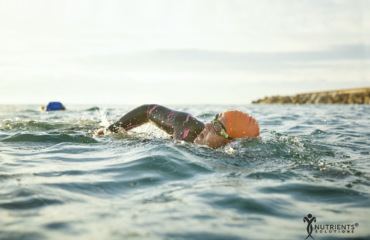Wellness Demystified: We Can Help You Discover Optimum Health
Runners Knee 101 How to Prevent and Treat It

Runner’s knee is one of the most common injuries among runners. Many people who live an active lifestyle will experience it at one point or another. What causes runner’s knee though, and is there any way to prevent it? This article looks at causes, treatment methods, and prevention methods for this common complaint and ensures that you’ll know just what to do to minimize risk in the future.
Running has many benefits and, in general, these far outweigh the potential negatives. One of the unfortunate side effects of living an active life, however, is the risk of injury. Runners suffer from many conditions, from the minor inconveniences to the more severe injuries that can take months to heal. One of the most common ailments is runner’s knee. Nearly every running enthusiast has experienced (or has a friend who suffers from) this condition at one point or another. But what is it and why is it so common among runners? Here are some of the causes of runner’s knee and the best methods of treatment and prevention.
What is Runner’s Knee?
Patellofemoral Pain Syndrome got its nickname because (as you can probably guess) it’s especially prevalent in runners, although anyone with an active lifestyle is at risk. The term runner’s knee broadly refers to any pain or discomfort around the patella (kneecap). The primary symptom is pain while bending the knee, but you might also feel a popping or grinding sensation or experience inflammation around the kneecap. While it’s usually not too severe and won’t require surgery, it can be a real nuisance if you’re not smart about your training and recovery.
What Causes Runner’s Knee?
There are a few things that can cause runner’s knee, from worn cartilage to biomechanical problems, such as the placement of your patella, or the ease with which it moves around. High arched feet or flat feet can also affect your running motion and strain your knees excessively, while tight muscles will put pressure on this area. Weak quadriceps may also result in increased movement of the kneecap (patellar tracking). On the other hand, the repetitive motion of running itself might be the cause, even without other significant factors.
How to Treat It
The good news is that runner’s knee will usually just go away on its own, as long as you’re sensible and give it time. Knowing how best to treat it can also speed up the recovery process. Here are some of the primary methods:
- RICE—Rest, ice, compression, and elevation is a tried-and-tested method of treating soft tissue injuries yourself. Resting the knee is essential; you might be tempted to run through the pain, but this will hinder your recovery. Applying ice can help relieve pain while reducing swelling and inflammation. Compression, such as taping or a knee brace, will give your knee extra support and contribute to improving blood flow. Elevating your leg also reduces swelling and will stop blood from pooling in one area.
- Stretching/strength training—as mentioned earlier, tight or imbalanced muscles can lead to knee injury. Your quads especially can cause runner’s knee, so work out some stretches to implement (and try some resistance training in the latter stages of recovery).
- Cross-training—taking it easy with your running doesn’t mean giving up exercise altogether. Consider low-impact alternatives, such as swimming or cycling, while you’re recovering so you can maintain your fitness and prevent yourself from getting restless.
How to Prevent It
Maybe you haven’t suffered from runner’s knee yet, and you want to minimize the chances of ever doing so. In that case, here are some of the ways to keep the risks down:
- Gradually increase mileage—too much of a change in training in a short time can put a lot of strain on the body and make you more susceptible to injury. Work your way up to mileage increases (no more than around 10% jumps per week).
- Limit sudden change—if you’ve been training on flat terrain, suddenly switching to hill sprints or long-distance trail running can be a recipe for disaster. Like mileage increases, you should gradually implement any other changes into your training.
- Wear the right gear—ill-fitting shoes, or shoes that don’t fit your running motion, can put a strain on your knee and make you more injury-prone. Consider consulting experienced running-store staff. Custom inserts and orthotics can also help with your gait.
- Weight training—many runners ignore the free weights section of the gym but strengthening your muscles and combating any muscle imbalances is an excellent way of staying injury-free. Compound lifts, such as squats or lunges, are a great starting point and will work many different leg muscles.
Good Luck
While you can never guarantee an injury-free life as a runner, being smart in your training and sensible about your recovery will help to prevent or minimize the effects of runner’s knee. As long as you take the necessary precautions and know when to dial things back, then runner’s knee should just be a mild inconvenience rather than a significant issue.
© 2019 Nutrients Solutions, LLC. All rights reserved. Disclaimer: The information provided is for educational purposes only and does not constitute medical advice. Always seek the advice of your physician or qualified healthcare provider with any questions or concerns about your health. Check with your doctor before beginning any exercise program. Never disregard or delay seeking medical advice because of something you have heard or read in this article or the internet.












